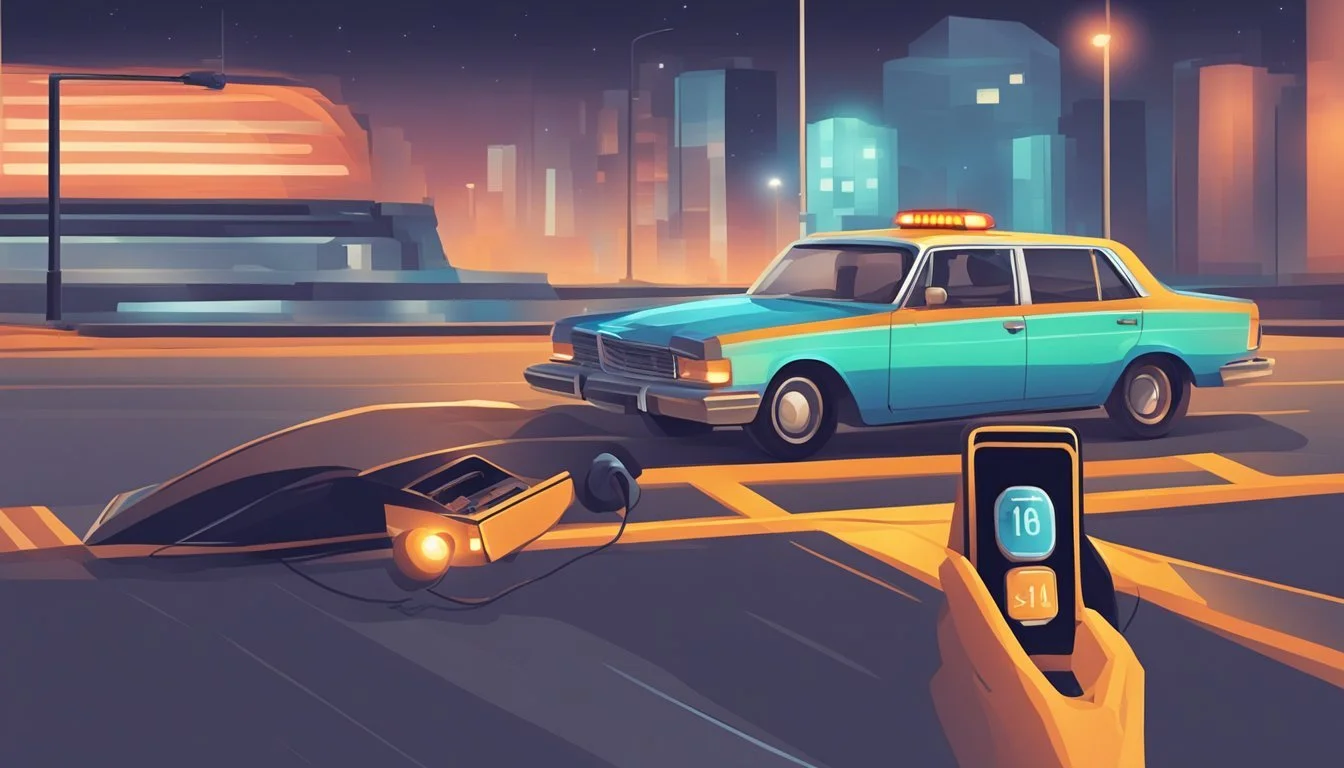Michael Bruce Ross: 8 Roadside Safety Tips
Lessons Learned from a Serial Killer's Crimes
Michael Bruce Ross, known as the Roadside Strangler, committed a series of heinous crimes in the 1980s that shocked Connecticut and surrounding states. His actions highlighted vulnerabilities in roadside safety, particularly for women traveling alone.
In the aftermath of Ross's crimes, law enforcement and safety experts developed new strategies to protect drivers. These eight roadside safety tips emerged as crucial practices to help prevent similar incidents and enhance personal security while traveling. The recommendations aim to empower drivers with practical knowledge and situational awareness.
1) Keep Emergency Numbers Handy
Storing essential emergency contact numbers is a critical safety measure for drivers. Experts recommend programming these numbers into mobile phones for quick access during roadside emergencies.
Key numbers to save include local police departments, highway patrol, and roadside assistance services. Storing a trusted friend or family member's number as an emergency contact is also advisable.
For those traveling in unfamiliar areas, researching and saving region-specific emergency numbers beforehand can prove invaluable. This includes numbers for nearby hospitals, tow truck services, and local law enforcement.
Experts suggest regularly updating these contacts to ensure accuracy. Keeping a physical list of emergency numbers in the vehicle serves as a backup in case of phone issues.
Some safety organizations recommend creating a speed dial system for the most critical emergency numbers. This allows for rapid dialing without needing to search through contacts during stressful situations.
2) Stay Inside Your Vehicle
Remaining inside your vehicle is crucial for safety when stopped on the roadside. Your car acts as a protective shell, shielding you from potential hazards on the road.
Exiting the vehicle puts you at risk of being struck by passing traffic. This danger increases at night or in low visibility conditions. Even during the day, drivers may not notice a person standing near the road.
Keep doors locked and windows rolled up while waiting for assistance. This prevents unauthorized entry and protects against potential criminals. If someone approaches offering help, communicate through a slightly lowered window.
Use your cell phone to call for roadside assistance or emergency services from inside the vehicle. Many modern cars have built-in emergency call systems for added convenience and safety.
Only leave your vehicle if staying inside poses an immediate danger, such as a fire. In such cases, exit on the side away from traffic and move well off the road to a safe area.
3) Use Hazard Lights
Hazard lights are a crucial safety feature when dealing with roadside emergencies. These flashing lights alert other drivers to potential dangers ahead, giving them time to slow down or move over.
Activating hazard lights increases visibility, especially in low-light conditions or bad weather. This simple action can significantly reduce the risk of collisions with stopped vehicles.
Drivers should turn on hazard lights immediately when pulling over due to car trouble. The lights should remain on while the vehicle is stationary on the shoulder or roadside.
It's important to note that hazard light use may be regulated differently depending on location. Some areas restrict their use to emergencies only, while others allow them during severe weather or when driving slowly.
Proper use of hazard lights is a key part of roadside safety. They provide a clear signal to other motorists that caution is needed, potentially preventing accidents and saving lives.
4) Set Up Flares or Warning Triangles
Setting up flares or warning triangles is crucial for roadside safety. These devices alert approaching drivers to a stopped vehicle, potentially preventing accidents.
Flares and triangles should be placed within 10 minutes of stopping. For maximum visibility, position one device about 100 feet ahead of the vehicle on the traffic side.
Place another 10 feet behind the vehicle, also on the traffic side. A third should be placed 100-500 feet behind the vehicle, depending on road conditions and visibility.
LED flares offer a modern alternative to traditional pyrotechnic flares. They're reusable, long-lasting, and visible from great distances.
When setting up warning devices, wear reflective clothing or a safety vest. This increases your visibility to oncoming traffic, reducing the risk of being struck.
Remember to retrieve all warning devices before departing. Leaving them on the roadside can create hazards for other drivers.
Proper use of flares or warning triangles can significantly improve safety during roadside stops. Always keep these devices easily accessible in your vehicle.
5) Stay Visible With Reflective Gear
Reflective gear plays a crucial role in roadside safety. It enhances visibility, especially during low-light conditions or at night.
Drivers should keep reflective vests or jackets in their vehicles. These items can be quickly donned when exiting the car on the roadside.
Reflective triangles or flares are essential for marking a stopped vehicle. They alert approaching drivers to slow down and move over.
Some emergency kits include reflective tape. This can be applied to clothing or the vehicle to increase visibility.
Reflective accessories like armbands or ankle straps offer additional visibility options. These are particularly useful for pedestrians or cyclists.
Proper use of reflective gear can significantly reduce the risk of accidents. It gives other drivers more time to react and adjust their course.
Experts recommend wearing bright colors in addition to reflective elements. This combination maximizes visibility in various lighting conditions.
Regular maintenance of reflective gear is important. Clean and replace items as needed to ensure optimal performance.
6) Lock Your Doors
Keeping car doors locked while driving is a crucial safety measure. This simple action can prevent unauthorized entry and potential attacks from strangers.
Drivers should make it a habit to lock doors immediately upon entering their vehicle. Many modern cars have auto-lock features that engage when the car starts moving.
For those without auto-lock, manually locking doors before starting the journey is essential. This applies to both urban and rural areas, as safety threats can occur anywhere.
Locked doors provide a physical barrier against would-be assailants. They make it more difficult for someone to quickly open a car door and gain access to the occupants.
Even when stopping briefly, such as at traffic lights or in parking lots, doors should remain locked. This precaution is especially important in isolated or unfamiliar areas.
Passengers should also be aware of the importance of locked doors. Children, in particular, should be taught not to unlock or open doors without permission from the driver.
7) Always Have a Charged Phone
A fully charged mobile phone is crucial for roadside safety. It enables travelers to call for help in case of emergencies or breakdowns. Keeping a phone charged also allows access to GPS navigation and real-time traffic updates.
Many modern vehicles come equipped with USB ports for charging devices. For older cars, investing in a car charger adapter is wise. Portable battery packs offer another solution for keeping phones powered on long trips.
Experts recommend checking phone battery levels before departing and bringing charging cables. Setting phones to power-saving mode can extend battery life during journeys. Some drivers keep a spare basic phone with long battery life as an emergency backup.
Public safety officials stress the importance of being able to contact emergency services from any location. A charged phone allows stranded motorists to share their exact location with responders. It also provides a way to stay in touch with family members about travel plans and delays.
8) Keep a First Aid Kit
A well-stocked first aid kit is essential for roadside safety. It can provide immediate care for minor injuries and help manage more serious situations until professional help arrives.
Basic first aid kits should include bandages, gauze, antiseptic wipes, and pain relievers. More comprehensive kits may contain splints, burn gel, and a CPR mask.
Regularly check and restock your first aid kit to ensure all items are in good condition and not expired. Store the kit in an easily accessible location in your vehicle.
Consider taking a basic first aid course to learn how to properly use the items in your kit. This knowledge can be invaluable during emergencies.
For longer trips or travel in remote areas, consider adding additional supplies such as emergency blankets and extra medications. Always tailor your kit to your specific needs and potential risks.
Historical Context of Roadside Safety
Roadside safety measures have evolved significantly over the decades, driven by tragic events and increased awareness of potential dangers. These developments aimed to protect travelers and prevent crimes occurring along highways and rural roads.
Impact of the Roadside Strangler's Spree
Michael Bruce Ross's crimes in the 1980s highlighted vulnerabilities in roadside safety. His attacks on women, often targeting those hitchhiking or stranded, exposed the risks of being alone on isolated roads.
This case sparked public concern and led to increased awareness about personal safety while traveling. Law enforcement agencies began emphasizing the importance of staying vigilant and avoiding potentially dangerous situations on roadsides.
Ross's crimes also prompted discussions about improving emergency communication systems along highways. This led to the expansion of emergency call boxes and later, the widespread adoption of mobile phones for roadside assistance.
Evolution of Roadside Safety Measures
Prior to high-profile cases like Ross's, roadside safety primarily focused on vehicle-related hazards. Early measures included improved signage, guardrails, and roadside barriers to prevent accidents.
In the 1990s and 2000s, safety initiatives expanded to address personal security. Rest areas were redesigned with better lighting and increased police presence. Some states implemented 24-hour staffing at welcome centers.
Technological advancements played a crucial role. The introduction of GPS-enabled devices and smartphone apps allowed for quicker emergency response and location tracking. Many vehicles now come equipped with built-in emergency call systems.
Public education campaigns became more prevalent, teaching travelers about safe practices when stopping on roadsides. These efforts emphasized staying in the vehicle, locking doors, and using official rest areas whenever possible.
Michael Bruce Ross: A Brief Biography
Michael Bruce Ross was an American serial killer who operated in Connecticut during the 1980s. His crimes and eventual execution made him a notorious figure in the state's criminal history.
Early Life and Criminal Activities
Born on July 26, 1959, Ross grew up on a chicken farm in Putnam, Connecticut. He excelled academically and attended Cornell University. However, his seemingly normal life masked a dark side that emerged in his early twenties.
Ross began his killing spree in 1981. He targeted young women and girls, typically offering them rides before assaulting and murdering them. His victims ranged in age from 14 to 25.
Over the course of three years, Ross claimed eight victims in Connecticut and New York. His method of operation earned him the moniker "The Roadside Strangler."
Capture and Conviction
Ross's crimes came to an end in June 1984 when he was arrested after being linked to the disappearance of two teenagers. During interrogation, he confessed to multiple murders.
In 1987, Ross was convicted of four murders and sentenced to death. He received additional life sentences for other killings. Ross initially fought his death sentence but later volunteered for execution.
On May 13, 2005, Ross was executed by lethal injection at Osborn Correctional Institution. He became the last person executed in Connecticut before the state abolished capital punishment in 2012.











